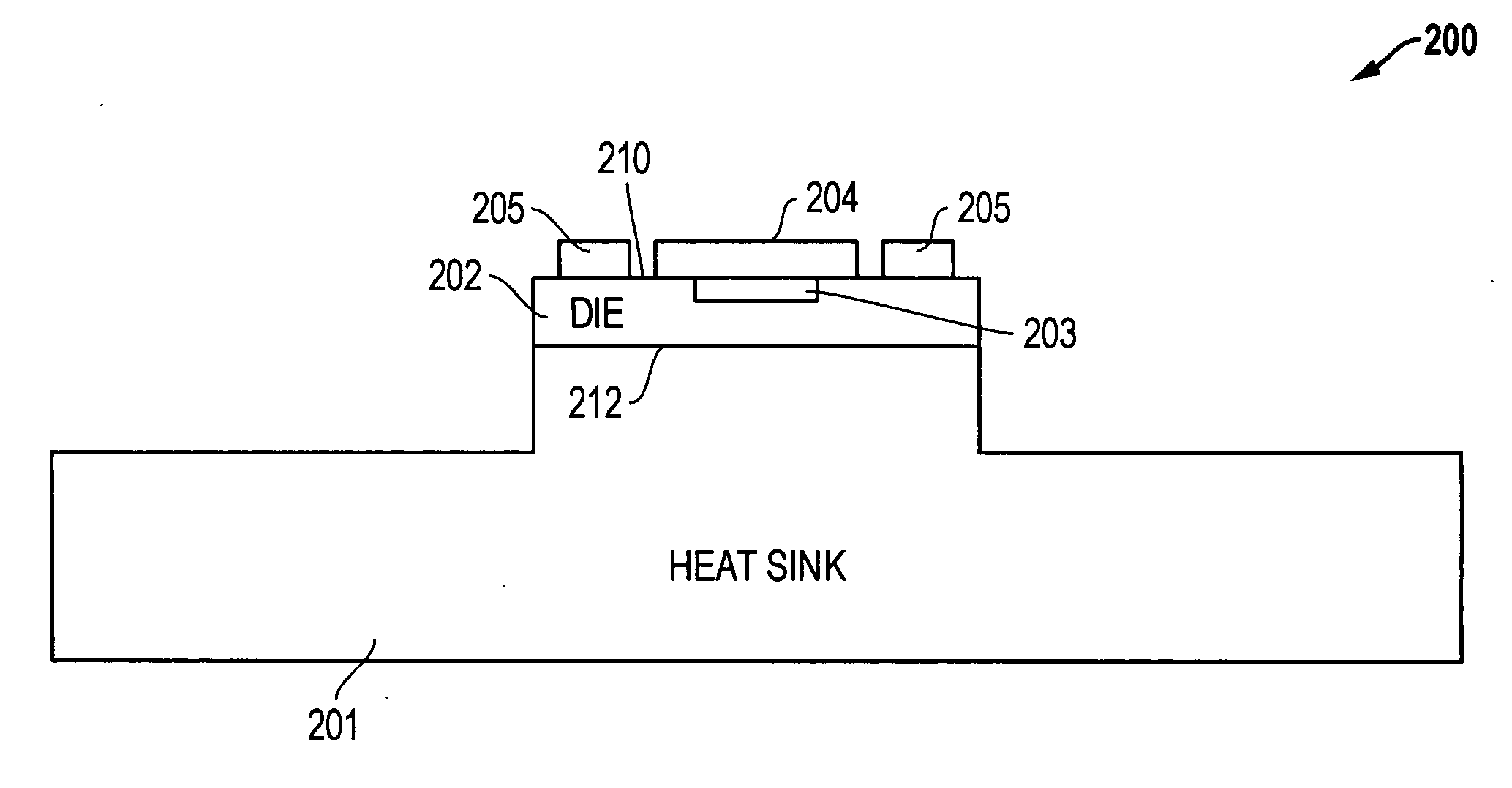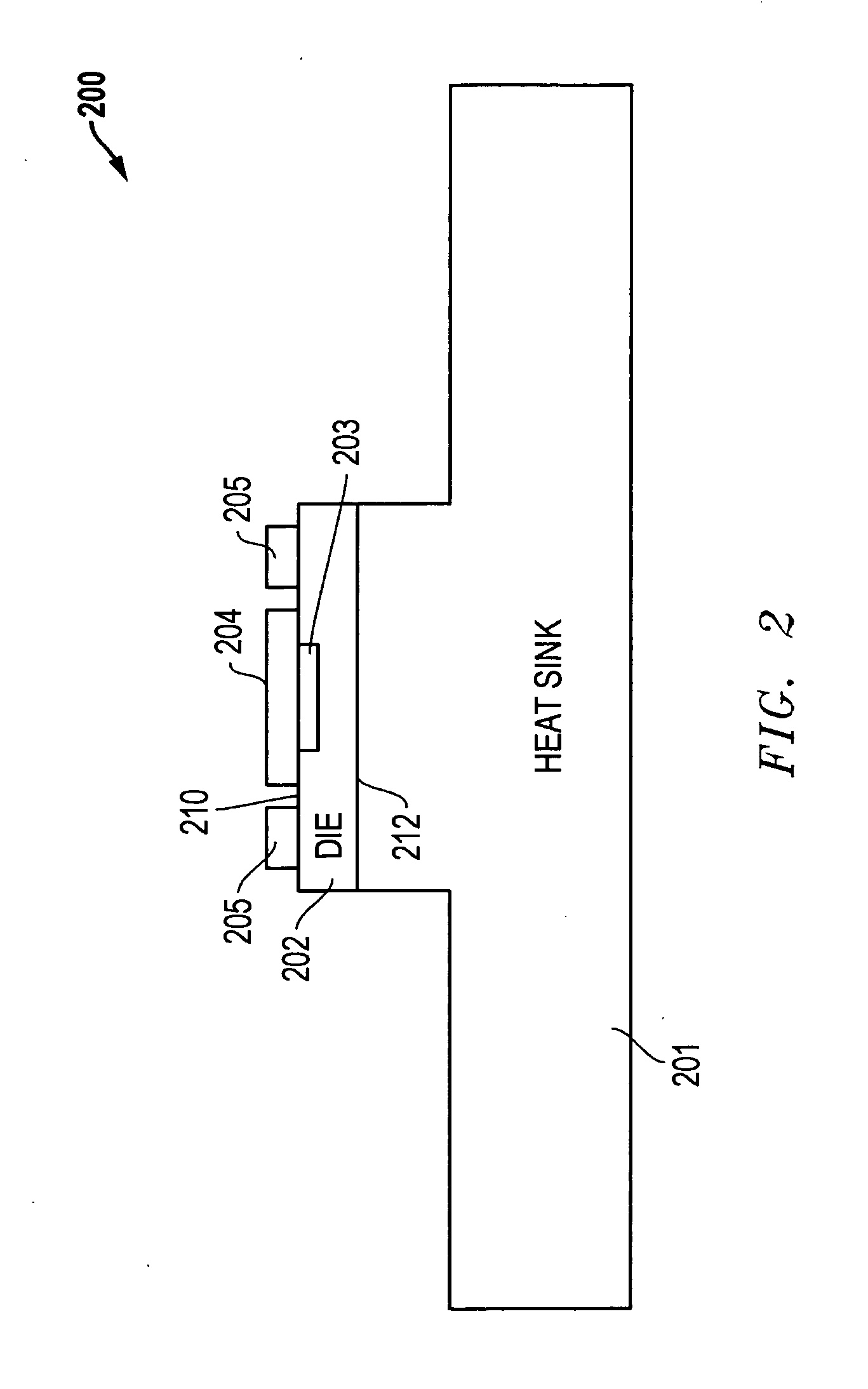Surface mounted infrared image detector systems and associated methods
a detector system and infrared image technology, applied in the field of infrared image detector systems, can solve the problems of inability to manufacture and maintain, inability to use surface mount technology, and inability to vacuum seal the infrared image detector array, etc., and achieve the effect of less manufacturing and maintenance costs and more reliable results
- Summary
- Abstract
- Description
- Claims
- Application Information
AI Technical Summary
Benefits of technology
Problems solved by technology
Method used
Image
Examples
embodiment 500
[0022]FIG. 5 shows a further alternate embodiment 500 of an infrared detector system 200 mounted to a printed circuit board (PCB) 301 using a die clamp 501 and using flexible leads 405 and / or lead frames to provide electrical connection between the semiconductor die 202 and the PCB 301. In FIG. 5, the plurality of connection points 205 on the semiconductor die 202 are connected with lead wires 405 to connection points on the PCB 301. It is noted that in this embodiment as depicted, connection points 205 are located on one side of the semiconductor die 202, but could be located on two or more sides, as desired. As with FIGS. 3 and 4, a heat sink 201 is coupled to back opposing surface 212 of the semiconductor 202. The infrared detector array 203 is formed on the front surface 210 of the semiconductor die 202. The lid 204 is again covering the infrared detector array 203. Unlike FIGS. 3 and 4, however, traditional surface mount techniques and spacers 305 are not used to provide the el...
embodiment 600
[0023]FIG. 6 shows an alternate embodiment 600 of an infrared detector system 200 mounted to a printed circuit board (PCB) without having a separate heat sink 201. As with FIG. 3, the infrared detector array 203 is formed on the front surface 210 of the semiconductor die 202. The lid 204 is again covering the infrared detector array 203. Unlike FIG. 3, traditional surface mount techniques are not used to provide the electrical and mechanical connections. Rather the semiconductor die 202 is directly mounted on to the PCB 301. And the connection points 205 are coupled to the PCB 301 using standard bond wires. In addition, the heat sinking capabilities of PCB 301 under die 212 could be enhanced, if desired, by adding copper traces to PCB 301. Other variations could be implemented as desired.
PUM
 Login to View More
Login to View More Abstract
Description
Claims
Application Information
 Login to View More
Login to View More - R&D
- Intellectual Property
- Life Sciences
- Materials
- Tech Scout
- Unparalleled Data Quality
- Higher Quality Content
- 60% Fewer Hallucinations
Browse by: Latest US Patents, China's latest patents, Technical Efficacy Thesaurus, Application Domain, Technology Topic, Popular Technical Reports.
© 2025 PatSnap. All rights reserved.Legal|Privacy policy|Modern Slavery Act Transparency Statement|Sitemap|About US| Contact US: help@patsnap.com



